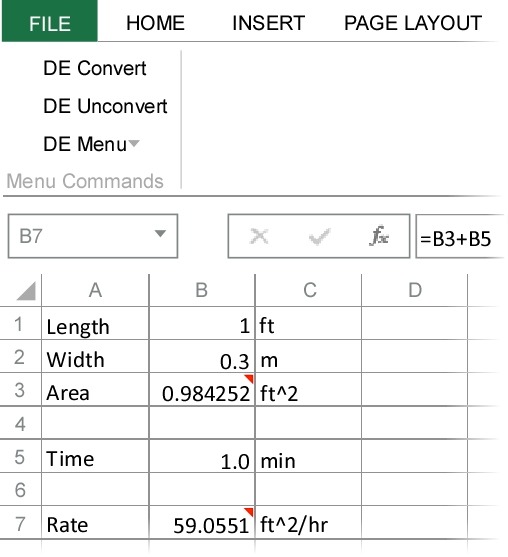In the QuickStart we considered the simple example of using DimensionEngine to add 1 ft and 0.3 m. If you have not looked at the this example in the QuickStart, we strongly encourage you to do so before continuing with the Advanced QuickStart.
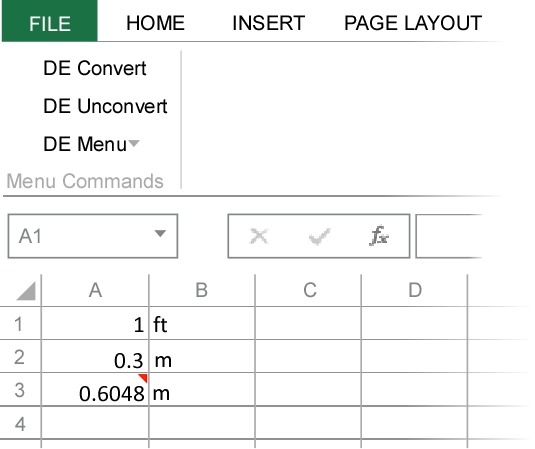
If DimensionEngine reports that your equation is dimensionally inconsistent or the units output by DimensionEngine are not what you expected, you will need to edit your equation. When you converted your original equation with DimensionEngine, it replaced it with a call to the function DE(). You can see this by highlighting the cell containing an equation you converted and looking at the formula window. You may have also noticed the small, red triangle in the cell with the converted equation. This is Excel's indication that the cell has a comment. If you place your cursor over that cell, the comment window appears. When you convert an equation using DimensionEngine, the original equation is saved as a comment.
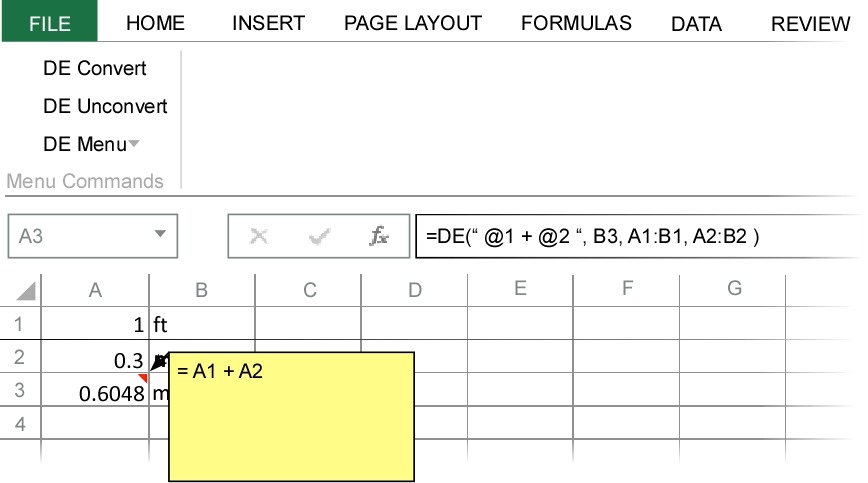
If you need to edit your equation, you should not attempt to edit the converted equation! Instead, highlight the cell with the converted equation and then click on "DE Unconvert" under the ADD-INS tab (using Mac Excel, select “DE Unconvert” from the DE menu, as shown here). This will replace the converted equation with your original equation, which you can edit as you would any other equation in Excel. When you are done editing the equation, simply select "DE Convert" to have DimensionEngine complete the dimensional analysis of the new equation.
Suppose that instead of adding 1 ft and 0.3 m we had intended to calculate the area of a rectangle with these dimensions. To change our equation we first use "DE Unconvert" to change it back into a regular Excel equation. We then edit the equation, replacing the "+" operator with "*".
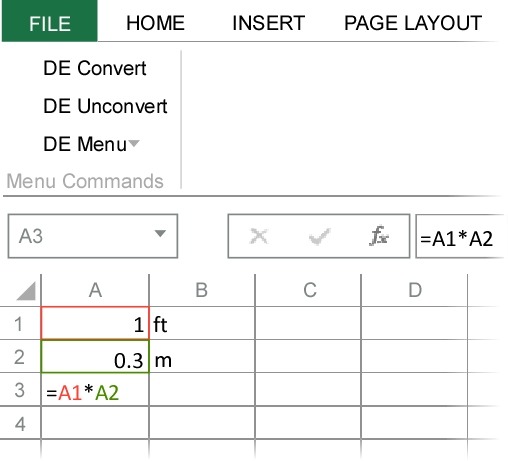
This time when we convert the new equation with "DE convert" we find that our answer has units of square meters, as we would expect when calculating an area.
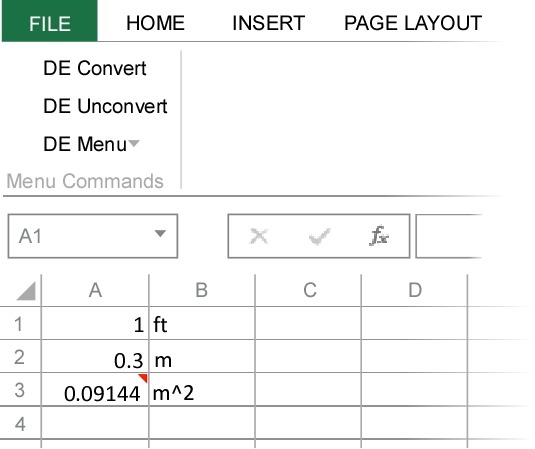
Results from converted equations can be used in other equations. For example, suppose the area we calculated above is the area of flooring a person can install every minute. To determine the area of flooring the person could install per unit time, we divide this area by the time required to install flooring over this area (say 1 minute).
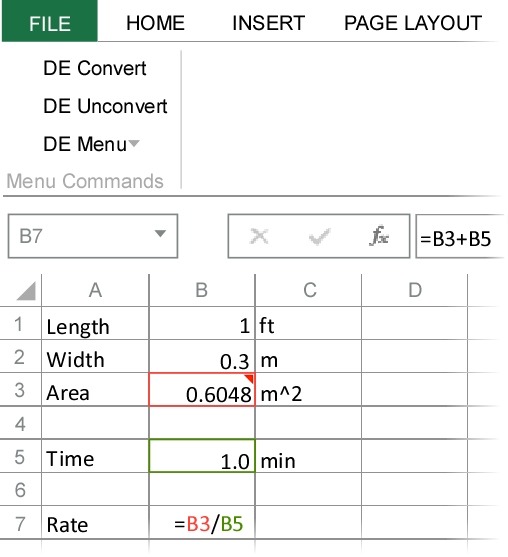
Highlighting the cell (cell B7) with our new equation and clicking on "DE Convert", DimensionEngine reports that our answer has units of area per time, as expected. In the example below we have specified the output units to be ft^2/hr, rather than the default m^2/s.
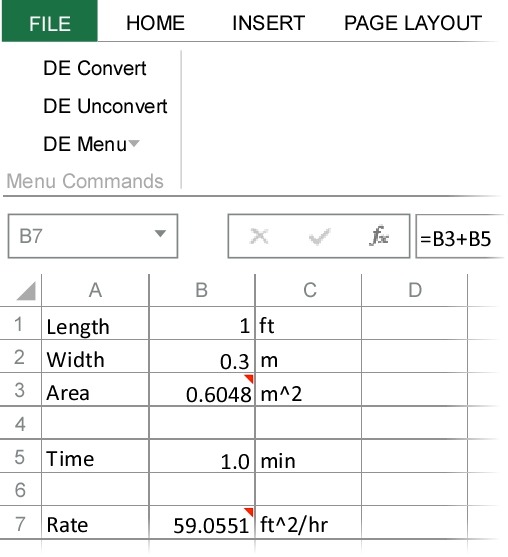
Notice that changing the output units for the area, e.g. from "m^2" to "ft^2", does not change the rate. DimensionEngine automatically converts the units appropriately.
